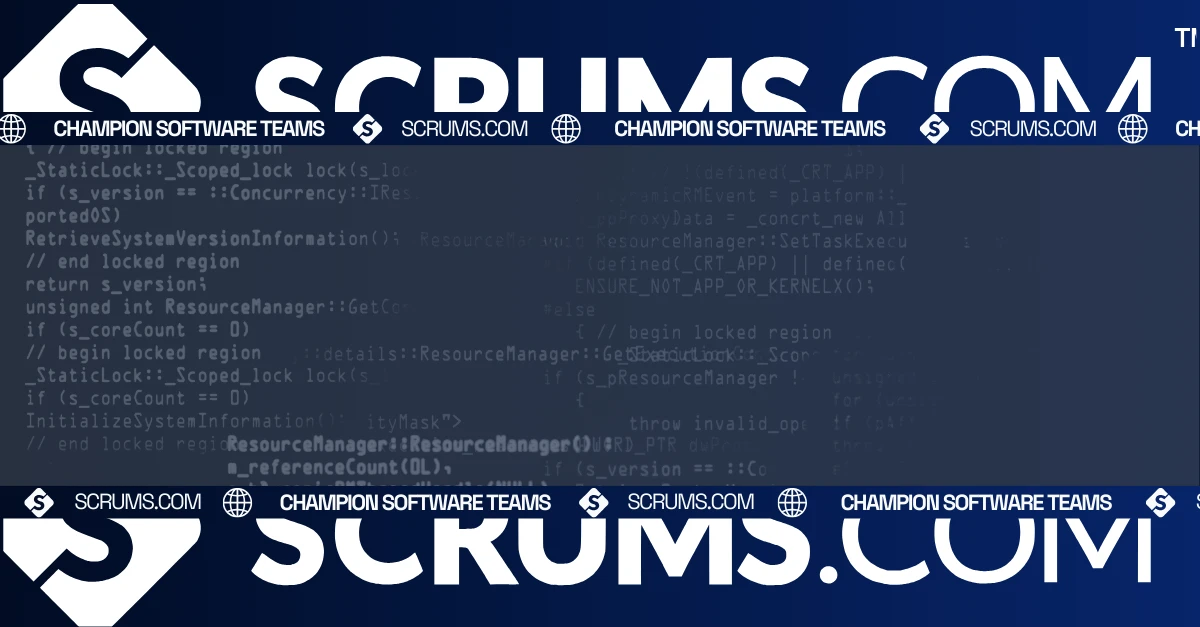Application Programming Interface (API): A Tech Term Explained
What is an API?
An API (Application Programming Interface) is a set of rules and protocols that allows different software applications to communicate with each other. APIs enable developers to access the functionality of other software applications, services, or platforms without having to understand their internal workings. They play a crucial role in software development services by facilitating the integration of different systems, enhancing functionality, and enabling seamless communication between various software components.
How APIs Work
APIs work by defining a set of rules for how software components should interact. Here’s a simplified view of how an API operates:
- Request: A client application sends a request to the API. This request includes the desired operation and any required parameters. For example, a request might be made to retrieve user data or submit a form.
- Processing: The API receives the request, processes it according to its defined rules, and interacts with the server or backend system. This may involve querying a database, performing computations, or calling other APIs.
- Response: Once the request has been processed, the API sends a response back to the client. This response contains the data or result of the requested operation, formatted according to the API’s specifications (e.g., JSON or XML).
- Integration: The client application uses the data or results received from the API to perform further actions or display information to the user.
Types of APIs
REST (Representational State Transfer)
Overview: RESTful APIs use standard HTTP methods (GET, POST, PUT, DELETE) and are designed around resources, which are identified by URLs. They are stateless, meaning each request from a client to a server must contain all the information needed to understand and process the request.
Use Cases: Web services, mobile applications, and cloud services.
SOAP (Simple Object Access Protocol)
Overview: SOAP is a protocol that uses XML-based messaging to communicate between applications. It relies on a strict set of rules and standards and supports complex operations and formal contracts.
Use Cases: Enterprise applications, financial services, and telecommunications.
GraphQL
Overview: GraphQL is a query language for APIs that allows clients to request only the data they need. It provides a more flexible and efficient alternative to REST by allowing clients to specify the structure of the response.
Use Cases: Modern web and mobile applications require flexible and dynamic data retrieval.
gRPC (gRPC Remote Procedure Calls)
Overview: gRPC is a high-performance, open-source RPC framework that uses HTTP/2 for transport and protocol buffers for serialization. It supports multiple programming languages and provides features like bidirectional streaming.
Use Cases: Microservices, high-performance computing, and real-time applications.
WebSocketsome text
Overview: WebSocket APIs provide full-duplex communication channels over a single, long-lived connection. This allows for real-time, two-way interactions between clients and servers.
Use Cases: Chat applications, live notifications, and real-time data feeds.
Benefits of APIs
- Enhanced Integration: APIs facilitate seamless integration between different software systems, enabling them to work together and share data effectively.
- Increased Efficiency: By automating tasks and enabling data exchange, APIs streamline workflows and reduce manual efforts, leading to improved productivity.
- Scalability: APIs allow applications to scale by enabling them to leverage external services and functionalities without having to develop everything in-house.
- Flexibility: APIs offer flexibility by allowing developers to choose and integrate different services or components according to their needs, leading to more adaptable solutions.
- Innovation: APIs foster innovation by providing access to new technologies and services, enabling developers to build new applications and features that leverage existing capabilities.
- Cost Savings: Utilizing APIs can reduce development costs by leveraging existing services and solutions rather than building new ones from scratch.
Use Cases
- Integration of Third-Party Services: APIs allow applications to integrate with external services like payment gateways, social media platforms, and mapping services.
- Data Exchange: APIs facilitate data exchange between different systems, such as between a web application and a backend database.
- Microservices Architecture: APIs enable communication between microservices in a distributed system, allowing them to work together seamlessly.
- Automation: APIs can automate repetitive tasks and processes, improving efficiency and reducing manual intervention.
Security Considerations
- Authentication and Authorization: Ensure that APIs have robust authentication (e.g., OAuth, API keys) and authorization mechanisms to control access.
- Encryption: Use HTTPS to encrypt data transmitted between clients and servers, protecting it from eavesdropping and tampering.
- Rate Limiting: Implement rate limiting to prevent abuse and protect API resources from excessive requests.
- Input Validation: Validate and sanitize inputs to prevent injection attacks and other security vulnerabilities.
- Logging and Monitoring: Regularly monitor API usage and log activities to detect and respond to potential security threats.
Examples of Popular APIs
- Google Maps API: Provides access to Google Maps services, including maps, geolocation, and directions. Commonly used in applications requiring location-based features.
- Twitter API: Allows developers to interact with Twitter's platform, including posting tweets, reading user timelines, and accessing trending topics.
- Stripe API: Offers payment processing services, enabling businesses to handle transactions and manage financial operations.
- Facebook Graph API: Provides access to Facebook's social graph, allowing applications to interact with user profiles, posts, and other social features.
- OpenWeatherMap API: Delivers weather data, including current conditions, forecasts, and historical weather information, useful for applications that require weather-related functionality.
Common FAQs Around this Tech Term
REST is more flexible and lightweight, using standard HTTP methods and data formats like JSON. SOAP is more rigid, using XML and a formal contract, but provides higher security and supports complex transactions.
API rate limiting controls the number of requests a client can make to an API within a specific time frame. It helps prevent abuse and ensures fair usage of resources.
Secure your API by implementing strong authentication and authorization mechanisms, using encryption for data in transit, validating inputs, and monitoring API activity.
API documentation provides developers with detailed information on how to use an API, including available endpoints, request and response formats, authentication methods, and examples of usage.
Yes, APIs are commonly used in internal applications to enable communication and integration between different systems within an organization.
Explore Software Development Blogs
The most recent trends and insights to expand your software development knowledge.






